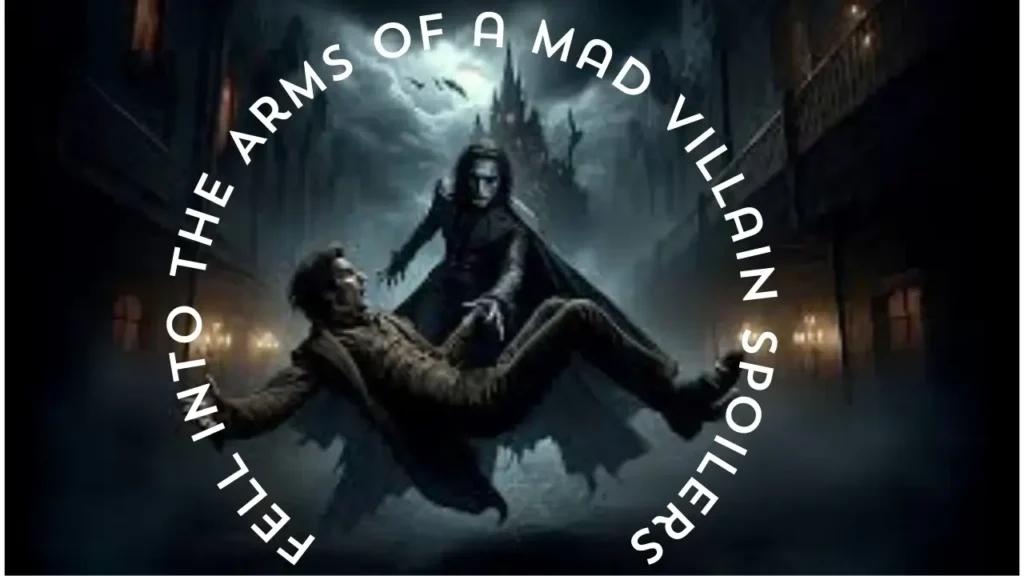Fell Into the Arms of a Mad Villain: Unraveling the Spoilers and Hidden Secrets
Understanding the Narrative Device
The Psychological Complexity of Mad Villains
A mad villain is not merely a plot device but a character embodying psychological complexity and profound motivations. These characters often operate on a plane where their perceived insanity masks a deeper, more coherent purpose. This complexity adds layers to their interactions with the protagonist, creating rich, multifaceted encounters. The trope of falling into the arms of such a villain plays on this complexity, often revealing vulnerabilities and hidden truths about both the antagonist and the protagonist.
The Protagonist’s Descent into Vulnerability
When a protagonist “falls into the arms” of a mad villain, it symbolizes a crucial moment of vulnerability and desperation. This moment is not only a physical surrender but often a psychological one as well. It signifies a point where the protagonist is cornered, emotionally and mentally. This descent into vulnerability can be a turning point in the narrative, leading to profound character development and pivotal plot shifts.
Key Spoilers and Plot Twists
The Villain’s Master Plan Unveiled
In many stories, the mad villain’s master plan is intricately woven into the plot, revealing itself in stages. The moment when the protagonist falls into the villain’s arms is often when the full extent of the villain’s scheme comes to light. This revelation can involve:
- Unmasking Hidden Motives: The villain’s seemingly irrational actions often have a deeply rational and personal motive behind them, which is unveiled in this critical moment.
- Revealing the Protagonist’s Role: The protagonist’s own actions or past decisions might have unwittingly contributed to the villain’s plans, making this moment a revelation of their own complicity or role in the villain’s narrative.
- Setting Up Future Conflict: This moment often sets the stage for future conflicts and resolutions, with the protagonist now fully aware of the stakes and the depth of the villain’s machinations.
Character Dynamics and Emotional Impact
The encounter between the protagonist and the mad villain is often charged with intense emotional and psychological dynamics. This interaction can lead to:
- A Shift in Power Dynamics: The balance of power between the protagonist and the villain often shifts dramatically during this encounter, affecting their subsequent interactions and the overall narrative trajectory.
- Emotional and Psychological Fallout: The protagonist’s emotional and psychological response to falling into the arms of a mad villain can lead to significant character development. This might include grappling with feelings of betrayal, fear, or realization of personal flaws.
Exploring Themes of Power and Control
The thematic exploration of power and control is central to the narrative where a protagonist falls into the villain’s embrace. This moment highlights:
- The Illusion of Control: The protagonist’s initial belief in their control or ability to manage the situation is shattered, emphasizing the theme of the illusion of control versus the reality of power dynamics.
- The Nature of Evil: The mad villain often represents an extreme version of malevolence or madness, providing a backdrop to explore deeper philosophical and ethical questions about the nature of evil and its impact on individuals.
The Hero’s Journey and Transformation
In the context of the hero’s journey, falling into the villain’s arms can symbolize a critical stage of transformation:
- The Abyss and Rebirth: This moment often represents the protagonist’s descent into the abyss, a necessary phase for personal growth and eventual rebirth. It’s a transformative experience that shapes their future actions and decisions.
- Confronting Inner Demons: The protagonist’s confrontation with the mad villain often mirrors their inner struggles, forcing them to confront and overcome personal demons.
Critical Analysis and Interpretation
Literary Techniques and Symbolism
The use of literary techniques and symbolism enhances the depth of the encounter between the protagonist and the mad villain:
- Symbolism of the Embrace: The physical act of falling into the villain’s arms often symbolizes a deeper emotional or psychological submission. It’s a powerful visual representation of the protagonist’s vulnerability and the villain’s dominance.
- Dramatic Irony and Foreshadowing: The encounter frequently employs dramatic irony, where the audience is aware of the true nature of the villain’s intentions long before the protagonist. Foreshadowing also plays a crucial role in building tension and anticipation for this pivotal moment.
Impact on Audience Engagement
The dramatic moment of falling into the arms of a mad villain is designed to maximize audience engagement:
- Emotional Resonance: The emotional impact of this encounter often resonates deeply with the audience, evoking a range of responses from shock and sympathy to exhilaration and horror.
- Narrative Intrigue: This moment adds layers of intrigue to the narrative, keeping the audience invested in the unfolding story and eager to see how the protagonist will respond and ultimately overcome the challenges posed by the mad villain.
Conclusion
The trope of falling into the arms of a mad villain is a rich and multifaceted narrative device that serves to enhance character development, drive plot progression, and deepen thematic exploration. By understanding the psychological complexity of mad villains, the significance of key plot twists, and the broader thematic implications, we gain a greater appreciation for this dramatic storytelling device. Whether it’s unveiling hidden motives or setting the stage for future conflicts, this moment remains a powerful tool in crafting compelling and unforgettable narratives.
